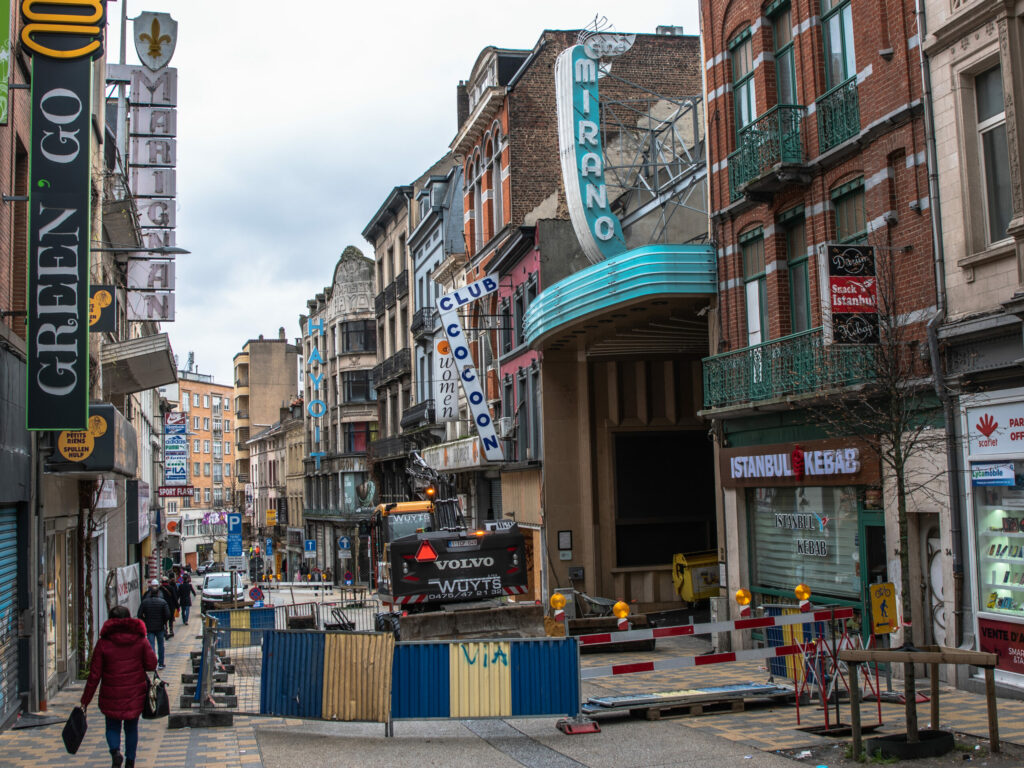The Brussels-Capital Region is home to four of the five municipalities where the risk of income poverty is highest.
Statbel, the Belgian statistical office, published for the first time the figures on poverty risk and income inequality at the municipal level on Thursday.
The data shows densely populated areas of the capital city as having the biggest concentration of poverty risk, while more rural areas, mostly in East Flanders, have the lowest.
The most striking figures show that Horebeke, in Flanders, is the municipality with the lowest risk of income poverty, with 3.2% of its population living below the poverty threshold. At the other extreme is Saint-Josse-ten-Node, where 34.6% of the population is at risk of poverty.
"The poverty risk indicates the proportion of the municipal population with an income below the national poverty threshold," explains the statistical office. The municipalities with the lowest poverty risk are all located in the Flemish Region: Horebeke (3.2%), Zwalm (3.4%), Holsbeek (3.5%), Oosterzele (3.7%), and Hoegaarden (3.7%).
The municipalities with the highest figures are located in the Brussels-Capital Region: Saint-Josse-ten-Noode (34.6%), Molenbeek-Saint-Jean (32.5%), Anderlecht (28.6%), and Schaerbeek (27.1%). The Walloon municipality of Dison (26.9%) joins the top 5 municipalities with the highest poverty risk.
Significant differences among provinces
Overall, 80 municipalities in Belgium fall below the 5% threshold of poverty risk. Nearly all of the 11 Belgian provinces have at least one municipality within this higher bracket, with the exception of the Walloon Brabant and Brussels-Capital Region.
71 in 80 of these municipalities are based in Flanders, with the Flemish Brabant standing out with 25 of them. The remaining municipalities are located in Wallonia, six of them in the province of Liège.
Nevertheless, 21 municipalities have a risk of poverty above 20%, and are all located in the Brussels-Capital Region (10 municipalities) and the Walloon provinces of Hainaut (6 municipalities) and Liège (5 municipalities).
Stabel warns that "the poverty risk does not necessarily say anything about the wealth of a municipality" and instead suggests looking at the median income per municipality. With that measure, Attert (Luxembourg) is the richest Belgian municipality, with €40,126. Woluwe-Saint-Pierre ranks 5th with a median of €33,473 and a risk of monetary poverty of only 8.7%. It is also the only municipality in the Brussels-Capital Region to make the list.
Amongst the lowest median income municipalities, Saint-Josse-ten-Noode ranks last with €18,341, followed by Molenbeek-Saint-Jean (€18,533) and Anderlecht (€19,517). Schaerbeek with €20,569 ranks 7th, and Brussels with €20,806 ranks 9th.
Disparities in the Brussels-Capital Region
A report of the Brussels Institute for Statistics and Analysis (IBSA) found that, along with Molenbeek-Saint-Jean, Saint-Josse-ten-Noode is the municipality where the labour market situation of residents is the most unfavourable, for both sexes and even more so for women.
Indeed, while the unemployment rate in Molenbeek-Saint-Jean is 23.5% and 23.3% in Saint-Josse-ten-Noode, the regional average is 16.3%.
By contrast, Woluwe-Saint-Pierre appears to be the richest municipality in the region, with the most favourable situation on the labour market for its residents. The unemployment rate is 8.3%, almost half the regional average.

